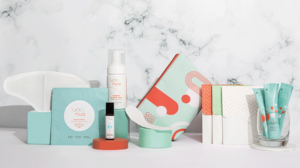The evolution of sanitary pads and period products has been a long journey with multiple speed-breakers on the way – from aprons and old clothes to pads which are accessible to many. Now, when we look back, it’s a history of menstrual blood collection worth knowing about .
Let’s travel back centuries and begin at the beginning:
The age of aprons and Lister’s Towels (1850-1900s)
Back in the mid-1800s, women developed different methods to collect the menstrual blood. One such period products used was created using an apron, which was not a comfortable option. The apron used to get heavy and smelly. It also affected women’s menstrual and intimate hygiene.
Due to this awareness, the late 1800s witnessed the arrival of the first disposable pad to enter the market. They were called Lister’s Towels created by Johnson & Johnson.* However, the pads were only limited to the American market.
The age of cotton-made sanitary products (1900s)
The very first sight of the evolution of sanitary pads were made out of cellulose, a cotton-acrylic blend, and introduced into the market by an American brand Kotex. Because of their absorbing nature, they were also used as bandages during the First World War. This phase also witnessed the invention of the first modern tampon, which was made out of cotton and cardboard.
Early in the 1970s, the conversations around menstruation were changing and the very few menstrual companies aimed to make periods more comfortable. For the same, an upgraded version of the pad with an adhesive strip was introduced into the market by Stayfree. This one was bigger and preferred by women as it didn’t restrict body movements.
Availability of menstrual cups and intimate hygiene products (Early 2000s)
With changing conversation around feminine care, many companies started taking into account the needs and wants of modern women to safely manage their menstrual blood flow. Early 2000s also marked the comeback of silicon-made Menstrual cups. Over the last twenty years, the sanitary pad industry has met new technological advancements and are spreading to every corner of the world. With the invention of more absorbent materials and better designs, pads are now more practical than ever and they’re also customised to suit one’s flow.
Taking comfort to the next level, products to help PMS symptoms started gaining popularity. The introduction of products like heat patches, intimate hygiene wash and pantyliners aim to make the period experience less dreadful and help women in maintaining their menstrual hygiene.
The journey of menstrual hygiene has indeed been a long and tough one. The history of centuries cannot be singled down to one article. Read our Nua guide: Knowing our world– V1 which perfectly explains every step it took to transform the rags to pads! Happy reading!
Reference:
Nua flow: Knowing our world | V1 : Rags to Pads!









